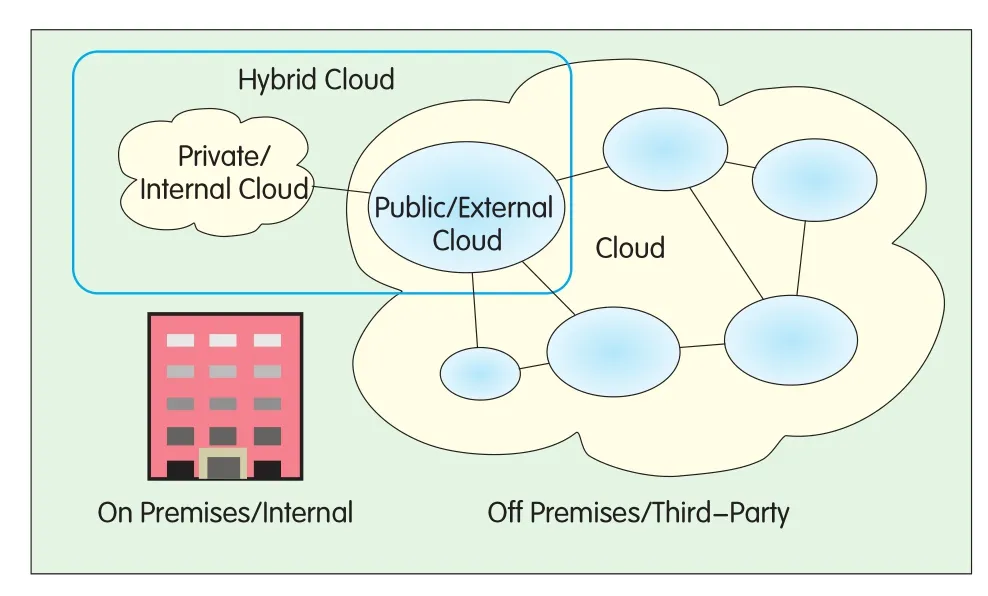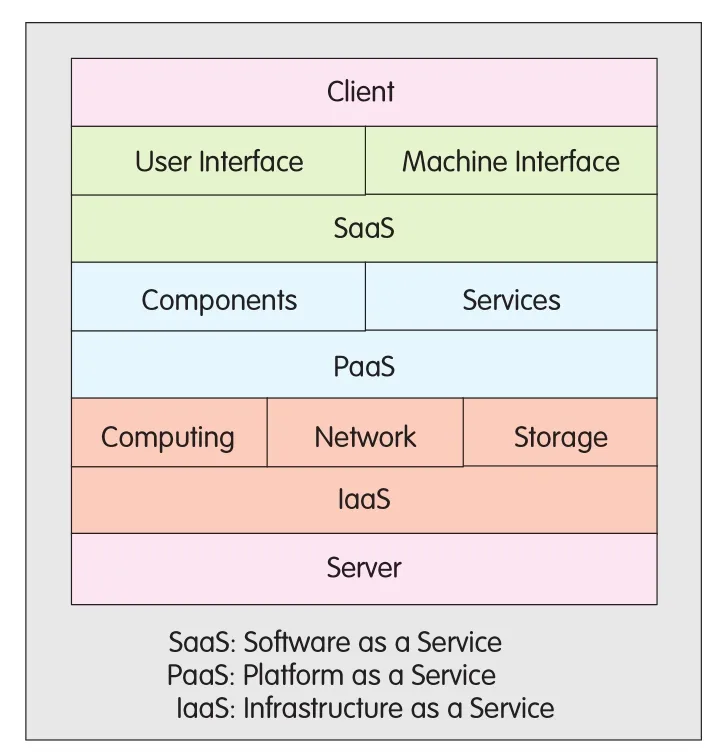Cloud Computing(2)
(School of Computer Science and Technology,Beijing University of Posts and Telecommunications,Beijing 100876,P.R.China)
5 Typical Applications of Cloud Computing
The development of grid computing has been a topic of great interest in academia but not in business.Cloud computing,on the other hand,has tended to attract more interest from industrial enterprises.Since Google CEO Eric Schmidt coined the term“cloud computing”in 2006,the whole industry has become involved in it.Soon thereafter,major IT players released successive plans on cloud computing,and propounded their cloud computing services.Such concerted action by IT enterprises has rarely been seen in the industry.
5.1 Google
Google has been the initiator and biggest player in cloud computing.In the process of building its empire,and with the support of over one million servers,Google has distributed its search engines in more than 200 locations.Moreover,the number of these facilities is rapidly rising.In order to facilitate communication and cooperation between these servers,Google developed Google File System(GFS),MapReduce,and BigTable.These technologies enable hundreds of thousands,even millions of computers to compose the“Cloud”,a powerful data center.GFS,MapReduce,and BigTable are therefore known as the three trumps of cloud computing.Kaifu Lee,ex-CEO of Google China,stated that the“Clouds”are the true competence of Google,which have provided the company with unique capabilities in storage and global data computation.
As well as cloud computing infrastructure,Google provides conventional Web-based office software such as Gmail,Google Calendar,Google Talk,Google Docs,and Google Earth.Google Docs stores data at a certain place in the Internet,which users can easily access through any Internet-connected system.Google has granted permission for third parties to run large-scale parallel applications by Google App Engine within its clouds.The company deserves praise because it is not conservative;Google has already made its three cloud computing trumps public in academic publications.The technologies have been enthusiastically taken up by universities and research institutes alike,and have become important tools for constructing cloud computing platforms and programmes.
5.2 IBM
IBM’s“Blue Cloud”offers paid subscribers an available cloud computing platform.The IBM cloud includes a suite of automated,self-managing,and self-healing virtual cloud computing software.It enables applications worldwide to access distributed large-scale server pools,creating a data center which can perform computing tasks in an Internet-like environment.IBM leads a joint research initiative of 17 European partners on cloud computing.The 170 million Euro EU-funded initiative is called RESERVOIR—Resources and Services Virtualization Without Barriers.In August 2008,IBM announced plans to invest about$400 million for the fransformation of its cloud computing data centers in North Carolina and Tokyo and later in 2009,announced an investment plan worth$300 million for the creation of 13 cloud computing centers in 10 countries.
5.3 Amazon
Amazon’s entry into the emerging field of cloud computing serves as a good precedent for other enterprises considering the same move.With Amazon Web Services(AWS),users can rent Elastic Compute Cloud(EC2)computers to run their own progams through simple Web service interfaces,and can utilize the limitless storage space of Simple Storage Service(S3).Amazon provides hourly billing for virtual machines,and also billing depending on the amount of data being transported.Within only 2 years,Amazon transformed cloud computing into big business.It currently has 440,000 registered developers and numerous enterprise-level clients.Based on data from third-party statistical agencies,Amazon’s cloud-derived income has reached$100 million.Cloud computing has become one of Amazon’s fastest growing services.
5.4 Microsoft
Microsoft launched its Windows Azure cloud operating system in October 2008.The Azure service platform is a cloud application platform,providing Live,Azure Data,.NET,SharePoint,and Dynamics CRM services.The platform implements application development,management,and trusteeship in cloud.Azure has its foundations in Microsoft’s global basic service system,composed of its transworld data centers.Microsoft owns hundreds of millions of Windows user desktops and browsers around the world,and now connects them into the“bule sky”.Its online cloud computing products also include MSN,Hotmail,Bing,and Product Service&Support.
5.5 Salesforce
Salesforce is a pioneer Software as a Service(SaaS)vendor.It provides web-access-enabled automatic application software,and following in its footsteps,a number of SaaS vendors have mushroomed.Platform as a Service(PaaS)is Salesforce’s next goal.It is in the process of creating a web application software platform,Force.com,which will serve as the basis for its enterprise clients to create their own software services.Force.com includes a relational database,user interface options,enterprise logic,and an intergrated developing environment called Apex.
5.6 Oracle
Oracle continues to be one of the pioneer promoters of enterprise grid applications.Its products include Real Application Clusters(RAC),Automated Storage Management(ASM),and storage grid.Oracle CEO Larry Ellison gave the following remarks on September 26,2008:“We’ve redefined cloud computing to include everything that we already do.I can’t think of anything that isn’t cloud computing with all of these announcements.”O(jiān)racle and Amazon has joined in cooperation to provide AWS-based products and services including Oracle software deployed in the cloud,and Oracle database backup in the cloud.
5.7 Development of Cloud Computing in China
In China,cloud computing has also developed rapidly and vigorously.The Chinese Institute of Electronics established the Cloud Computing Experts Association on November 25,2008,and held the first China Cloud Computing Conference at the China World Hotel,Beijing,on May 22,2009.On May 10,2008,IBM established its first Cloud Computing Centre at Tai Hu New Town Science and Industrial Park in WuXi,followed by a second at its Business Innovation Centre on June 24,2008.After signing a strategic cooperation framework agreement with the Nanjing Municipal Government in December 2008,Alisoft.com,a subsidiary of Alibaba.com,set up the first Chinese e-commerce Cloud Computing Centre in Nanjing City at the beginning of 2009.
China Mobile’s Research Institute also played a part in early cloud computing research,and has completed cloud computing tests.Mr.Wang Jianzhou,President and CEO of China Mobile,believes that cloud computing and mobile Internet are inevitable future trends.“Cloud Security”created by Chinese enterprises is a highly original concept in the international cloud computing field.This security technology uses numerous client ends on the Internet to monitor abnormal software behavior.It sends up-to-date information about Trojans and malware to the cloud security end for automatic analysis and handling,and then distributes solutions to each client end.The development of cloud security is like a gust of wind,and web security companies such as Rising,Trend Micro,Kaspersky,McAfee,and Symantec have released clould security solutions.Rising’s 2009 product based on cloud security can intercept millions of Trojan attacks everyday.With the help of the cloud,Trend Micro prevents up to 10 million virus infections a day.
6 Architecture of the Cloud Computing System
To understand what cloud computing is about,it is necessary to look inside the cloud—at its compnents and architecture.
The architecture of a software-hardware application system usually includes views from different angles.The same depiction can be made of a cloud computing system.Its internal components and organizational structure affect its functionality and use.The following will describe the cloud composition,classification,and service levels from different viewpoints,as well as Cloud Computing Open Architecture and Market-Oriented Cloud Computing.Certainly,cloud computing technology has not reached maturity.Different viewpoints give the reader a better understanding of the technology.
6.1 Compostion of the Cloud
As seen from the overview diagram in the preceding lecture,a cloud computing system consists of multiple cloud computing service providers.In terms of software and hardware,a cloud system is composed of many types of computers,storage devices,communications equipment,and software systems running on such devices.

Figure 2.Composition of the cloud.

Figure 3.Classification of the cloud.
Figure 2 is a very simple diagram showing the composition of the cloud,but it cannot illustrate what the cloud can do.In the environment of cloud computing,most data remains in certain Internet servers,while application programs run on cloud servers and user browsers.
6.2 Classification of the Cloud
Some researchers divide the cloud into public,private,and hybrid spheres,as shown in Figure 3.
(1)Public Cloud
Public cloud or external cloud describes cloud computing in the mainstream sense,whereby resources are dynamically provisioned on a fine-grained,self-service basis over the Internet,via web applications/web services,from an off-site third-party provider who shares resources and bills on a fine-grained utility computing basis.
(2)Private Cloud
Private cloud and internal cloud are neologisms that some vendors have recently used to describe offerings that emulate cloud computing on private networks.These(typically virtualisation automation)products claim to"deliver some benefits of cloud computing without the pitfalls",capitalising on data security,corporate governance,and reliability concerns.They have been criticized on the basis that users"still have to buy,build and manage them"and as such do not benefit from lower up-front capital costs and less hands-on management,essentially"lacking the economic model that makes cloud computing such an intriguing concept".
(3)Hybrid Cloud A hybrid cloud environment consisting of multiple internal and/or external providers"will be typical for most enterprises".
Generally speaking,cloud computing emphasizes a new model of Internet resource use,and is a means of treating IT resources as services.Almost all IT resources can be offered as cloud services,including application programs,computing capability,storage capacity,network communication service,and cooperation tools.Therefore,we will discuss cloud computing from the viewpoint of services.
6.3 Service Levels of the Cloud
By the end of 2009,most cloud computing infrastructures were composed of trusted services delivered by data centers and different level virtualization technologies based on servers.People can use these services at any place where there is available network infrastructure.Cloud computing software and data is stored at data centers and offered for general commercial application through web services.Users can then use browsers to access online application services.
Cloud computing services generally include SaaS,PaaS,and Infrastructure as a Service(IaaS).Figure 4 shows the often seen service stacks of the cloud computing system.
(1)A cloud client consists of computer hardware(including mobile devices)and/or computer software which relies on cloud computing for application delivery,or which is specifically designed for delivery of cloud services.
(2)A cloud service leverages cloud computing in software architecture,often eliminating the need to install and run the application on the customer’s own computer,thus alleviating the burden of software maintenance,ongoing operation,and support.Typical applications on this level include Facebook and YouTube web applications,Google Apps(such as Gmail)and Salesforce SaaS,and BitTorrent content distribution.
(3)A cloud platform(PaaS)delivers a computing platform and/or solution stack as a service,generally consuming cloud infrastructure and supporting cloud services.It facilitates deployment of applications without the cost and complexity of buying and managing the underlying hardware and software layers.Paypal,Google App Engine and Amazon S3 are typical PaaS applications.
(4)Cloud infrastructure(IaaS)is the delivery of computer infrastructure,typically a platform virtualization environment,as a service.Amazon EC2 is an IaaS application.
(5)The servers layer consists of computer hardware and/or computer software products which are specifically and soley designed for the delivery of cloud services.

Figure 4.Service stacks of cloud computing system.

Figure 5.Detailed service stacks in cloud computing system.
The Everything as a Service(XaaS)concept is closely related to cloud computing.Some researchers have even included human group intelligence into service stacks of cloud computing.This uses the power of the public to contribute to some services,such as Wikipedia and“newsworthy”video streaming.Figure 5 shows the detailed service stacks.
Simple services can be further combined into complex and various application services.This can be achieved on the SaaS layer,and on lower layers also.For example,AWS GrepTheWeb uses Simple Queue Service(SQS)to implement decoupling of the controller,Hadoop MapReduce is fulfilled in clusters of EC2 instances,and S3 and SimpleDB are used for data storage and retrieval.
- ZTE Communications的其它文章
- ZTE Hosts IEEE 10G-EPON Interoperability Showcase
- ZTE and Innofidei Achieve Industry’s First Field IOT on Multiple TD-LTE USB Donglesin a Mobile Network Cell
- ZTE Sells World’s Fastest HSPA+28.8M Data Card with Greece’s COSMOTE
- A Study on the Standardization of Future Internet Architecture
- ZTE to Build IMS COre Network for China Mobile
- Bearer Network of the Future Internet

